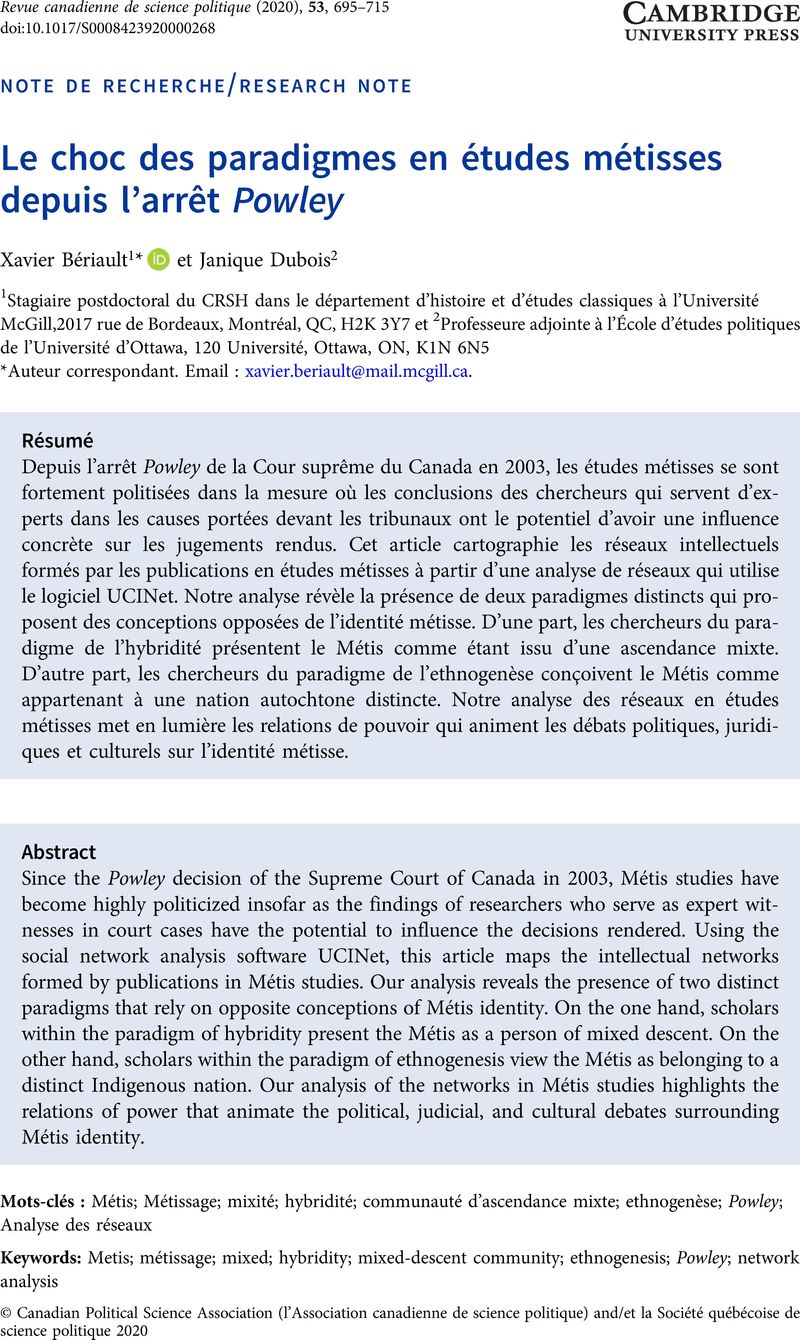Crossref Citations
This article has been cited by the following publications. This list is generated based on data provided by Crossref.
Melançon, Jérôme
and
Parker, Alyssa
2023.
Comprendre l’appartenance et les relations : retour sur les Tables rondes des francophones et des Métis de l’Ouest canadien.
Francophonies d'Amérique,
p.
73.
O’Toole, Darren
2024.
Le crépuscule des idoles.
Revue d’études autochtones,
Vol. 53,
Issue. 1,
p.
11.



